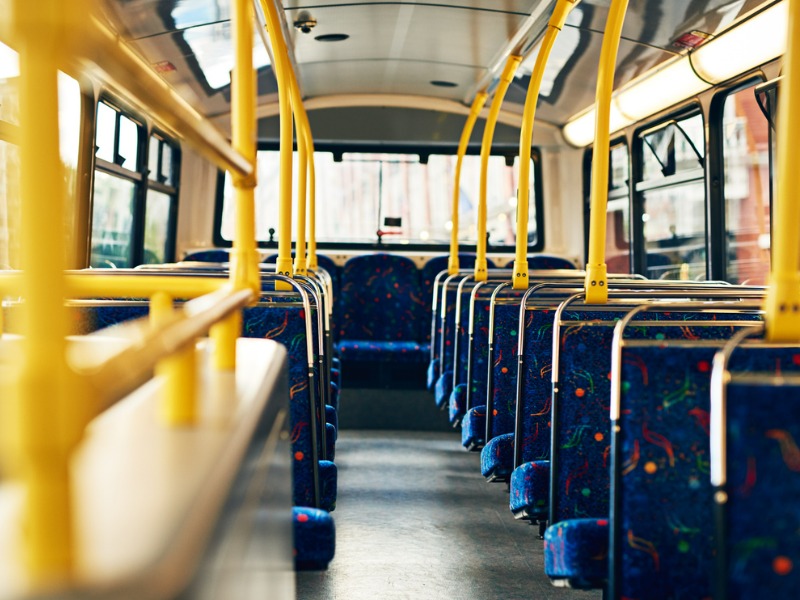How physics impacts injuries if transit busses crash

When a motor vehicle collision involves a public transit bus, many factors play into reconstructing injuries that may have occurred. And those factors centre around the differences between transit vehicles and conventional vehicles, such as passenger cars or light trucks.
First, there’s braking. Most transit buses have longer ‘brake lag’ than conventional vehicles because they’re equipped with air brakes, not hydraulic brakes. It takes longer for a bus to slow down after an operator hits the brake. Deceleration rates are also about 30% lower for transit buses than passenger vehicles. Both factors must be considered to determine if a collision could have been avoided.
Then there are the bus passengers. Hard braking may increase risk to riders standing or walking in the vehicle. That risk doesn’t exist for conventional vehicle drivers.
Data gathering
During an investigation, one of the first questions a collision reconstruction team will ask is whether the vehicles involved are available to complete an Event Data Recorder (EDR) download. In conventional vehicles, EDRs can tell us if an event was triggered, as well as the severity of the collision. Public transit buses can also store this type of data, but the way it’s stored is different.
Passenger vehicles store collision-related data in modules pertaining to the airbag systems. Busses don’t have airbags, so they store data in an Engine Control Module (ECM).
That means the specific data available depends on the engine manufacturer, not the bus manufacturer. In some busses, an event will be generated due to hard braking by the operator, even if there’s no collision. If no event is recorded by the ECM, this means the collision severity was under the threshold limit. ECM data may also be erased by subsequent braking activity, so it’s important to download investigative information as quickly as possible.
Insurance accident investigators working on a motor vehicle collision matter involving a transit vehicle should ask the following questions:
Was there an opportunity to avoid the collision?
Is the vehicle available for a download of the ECM?
Where was the plaintiff seated in the bus?
Which way was the plaintiff facing in their seat?
Was the plaintiff standing at the time of the incident? If yes, where and in what direction were they facing, and were there handholds available to them?
Answers to these questions can help determine the collision severity, opportunity to avoid, occupant motion, and the external forces and conditions that can cause injury.
Where does it hurt?
Understanding how occupants move within a vehicle is important when making biomechanical injury assessments. In a collision, bus occupants generally move toward the point of impact. In a frontal collision, occupants move toward the front of the vehicle – if the bus has rear-facing seats, those riders will move backwards toward the front of the bus. In a side collision, passengers move toward the side that was hit.
What physicians call tissue tolerance varies across regions of the body and depends on the type of movement a person undergoes. In a frontal collision, for example, the neck better tolerates forward and downward motions experienced by people facing forward than it does the upward motion that happens to someone who is facing backwards.
Meanwhile, in a rear-end collision, occupants would move toward the rear, so there is no initial loading of the body’s upper or lower extremities.
How an occupant moves also determines how they contact a vehicle’s interior structures. In a side collision, riders might hit their heads on side windows, or they may hit a stanchion or another occupant.
Bus design
Seat spacing on busses is typically closer than conventional vehicles and riders are kept within a confined space in most areas of the bus. But in certain areas, occupants will move freely until they contact a structure within the vehicle.
Standing passengers can maintain postural stability by keeping their centres of mass (around the belly button of an adult standing upright) within their base of support (the area beneath the body and within the outer margins of the feet when standing with no handholds, and beneath the body to the outer margins of the feet and the person’s reach when using handholds).
After a sudden force, the direction of that force influences a person’s ability to recover balance. A lateral force is easier for a person to recover from than a rear-ending that would lead to a backwards fall.
To determine how someone fell, it’s important to understand what the bus was doing at the time of the incident (stopping, starting, turning, etc.) and at what speed or acceleration level.
We also consider where the person was standing in the bus, which direction they were facing, and whether they were holding onto available handholds when the incident happened.
Mark Paquette is regional director of the national capital region and technical director of collision reconstruction at 30 Forensic Engineering. Brittany Sinclair is an associate of biomechanics and personal injury at 30 Forensic Engineering.
Feature image by iStock.com/PeopleImages







